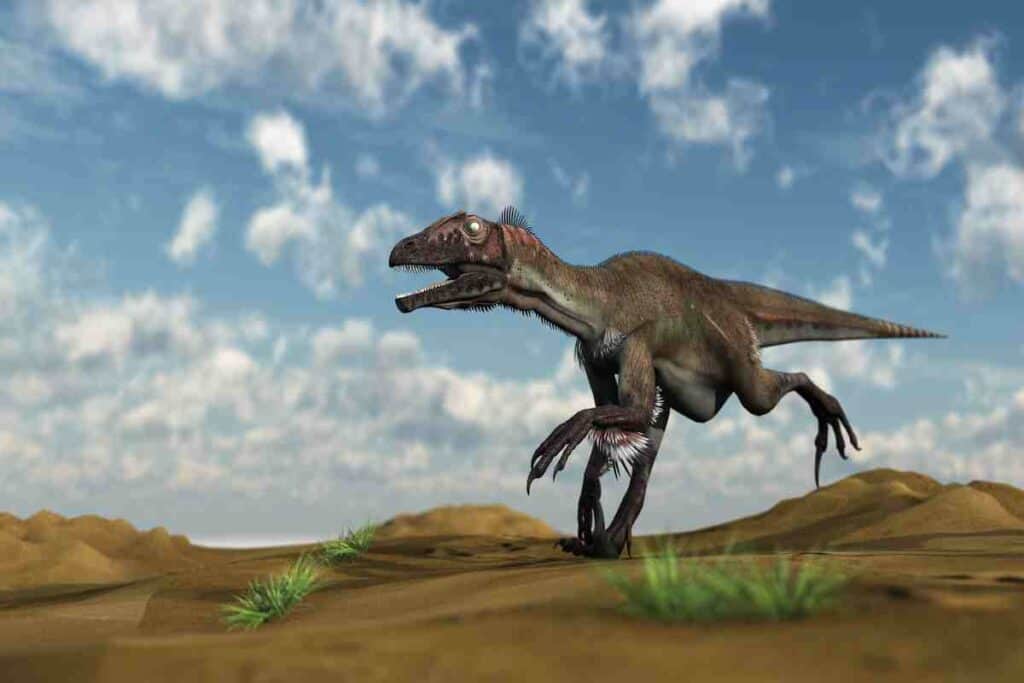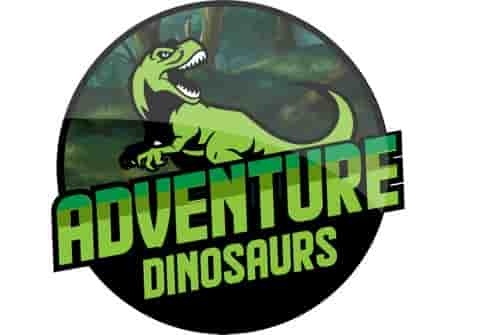Intelligence in animals is one thing scientists study to gain information on the hierarchy of life on the planet. Studying intelligence is challenging on living animals, what more with extinct ones such as dinosaurs. With difficulty knowing and ranking intelligence, scientists made a standard measure to gauge intelligence based on brain and body ratio called the EQ method. These values are then compared with modern-day animals to have a clear view of intelligence in these groups.

What About Dinosaur Intelligence – How Smart Were They?
How smart are modern birds compared to dinosaurs? Based on Encephalization Quotient, the smartest dinosaur with a brain about the size of an avocado pit is the Troodon. This dinosaur was a meat-eater with a brain size similar to a Cassowary, a modern bird.
Evidence supports that dinosaurs have smaller brains than their body size, which might have been the reason for their low intelligence; however, there are exceptions to this. Some dinosaurs exhibit the ability to fly and show maternal care, which is a unique trait compared to birds that can equate to intelligence. This article will discuss facts about measuring intelligence in dinosaurs and how they are compared to modern birds.
Table of Contents
How Do We Know How Smart Dinosaurs Were? The Groundbreaking EQ Method
Knowing the intelligence of organisms like dinosaurs that existed before humans is challenging. Good thing that scientists came up with a groundbreaking means to gauge intelligence called the Encephalization Quotient (EQ) method.
Things You Should Know About The Encephalization Quotient Method
One way to measure the intelligence of the dinosaurs is the Encephalization Quotient or the EQ method. This approach was developed by an American paleo neurologist, Harry Jerison, during the 1970s.
This system is calculated by the size of a creature’s brain against the size of the rest of its body then compares its ratio to the other species of the same size. Normally, warm-blooded mammals and birds have higher EQ compared to cold-blooded reptiles, including dinosaurs.
We humans, as warm-blooded mammals, have a large brain with an EQ of five, which is enormous than the rest of the animals. Some scale of the animal’s EQ is the 0.68 weight of the wildebeests, 0.63 EQ of the African elephants, opossums at 0.39 EQ while dinosaurs measure lower than the other animals.
One of the dinosaurs, like Triceratops, weighs an EQ of 0.11, which was found on the lower EQ scaling. For some dinosaurs in the Mesozoic era, the two-legged feathered dinosaurs had higher scores in EQ but were not as smart as the modern wildebeests. (Source)
The EQ approach helps the experts study how smart the dinosaurs were. It is traditionally depicted that if creatures have small brains, they are not smart. So, looking at the size of the dinosaurs somehow gives them injustice in terms of their intelligence.
Yet, almost all dinosaurs had similar EQ to the modern reptiles, with only the herbivorous groups such as large sauropods, armored Ankylosaurus, and Stegosaurus were found at the lowest scale of the EQ measurement. For this reason, they had big and thick bodies but were dumber than the other animals because of their small brains.
Some Dinosaurs and Their EQ: Who’s Who in Intelligence
A four-ton body of the Stegosaurus carries a walnut-sized brain. It is unbelievable at first compared to its size, which is why a myth surfaced back in the 1870s that this dinosaur may have two brains where the second one is found in the extra-large space of its spinal cord.
Recently, it is stated that the size of the Stegosaurus brain is compared to the dog’s brain, which is still small for a dinosaur that grew 9 meters long. However, their small brains were enough for them as plant-eating dinosaurs because a common rule is that you are what you eat. Considering the size of their brain, they still managed to prosper in the wilds of the late Jurassic period.
Armored dinosaurs like Ankylosaurus lived during the Cretaceous period. Its body was covered with osteoderms and possessed a clubbed tail that keeps predators away. Despite its three to four tons body weight and six to eight meters in length, this plant-eating dinosaur had an unusually small brain about the size of the Stegosaurus’ brain. Using the EQ approach, we determine that this dinosaur was not as smart as the others. (Source)
Some of the dinosaurs that possessed a larger brain were the predatory theropods. It is because these carnivorous dinosaurs required a higher level of intelligence needed to hunt their prey. Some of these dinosaurs were Tyrannosaurus rex and had a large brain compared to the other dinosaurian predators. T. Rex is considered the biggest brain, as big as the human brain but not the smartest dinosaur.
The smartest dinosaur with a brain that is about the size of an avocado pit is the Troodon. This dinosaur was a meat-eater and known as the “smartest animal of dinosaur times,” including the mammals of the Mesozoic era. (Source)
New Fossil Discoveries and Technology Help Deepen Our Understanding of Dinosaur Intelligence
Since intelligence is quite hard to calculate without evidence, new fossil discoveries and modern technology are useful in making these findings even more concrete. Indeed, there are some of the perks of having new technologies in understanding the dinosaur’s intelligence.
What We Know About Dinosaurs Intelligence Under the Microscope
It has been depicted that most dinosaurs had small brains according to the EQ method in which paleontologists measured the fossilized brain cavity of the species. However, with the recent discovery, experts can now fully understand the intelligence of the animals using the fossilized brain tissue of the dinosaurs.
The fossilized brain studied by the experts was found on a beach nearby Bexhill in Sussex, England, which was a preserved brain tissue of a large herbivorous dinosaur. The fossil settled between rocks 133 million years ago during the Early Cretaceous Period and was identified as an endocast- sedimentary layer that filled the skull.
The endocast fossils similar to the Iguanodon (the first identified dinosaur species) recorded some of the fine structure of the original brain tissues. With the intervention of the powerful scanning electron microscope, detailed visualization of the fossilized brain tissue is possible, which is a great tool to study the brain’s structure. (Source)
The powerful microscope showed collagenous outer membranes that function as protectors of the dinosaur’s brain, tiny blood vessels presented as tubes that run across the fossil’s surface. It even revealed evidence of deeper tissues of the brain cortex- part of the brain where neurons are found.
Intelligence in a Different Angle: Through CT Scan
Another advancement of technology used to better understand the dinosaurs’ smartness is the CT scan or the Computed Tomography. The found fossil of the brain tissue in England was studied and scanned by this tool, the CT scan, which revealed leaves & twigs fragments and bone.
Paleontologists believe that the dinosaurs may have died in a swampy, well-wooded environment where their head was buried based on the evidence of fossilized dinosaur brain tissue observed under an electron microscope and CT scanned sediment on a river that mineralized.
This discovery that the brain of the dinosaurs can be preserved paved the way for scientists to study other brain tissues of the dinosaurs and other extinct species regarding their intelligence.
The studied fossilized brain tissue changed the idea that dinosaurs were fearsome of their size but lacked intelligence. It revealed new evidence that dinosaurs had “bird-brained” or about the size of the brain of the birds. This bird-brained information of the dinosaurs is ample evidence of their intelligence.
Some Comparisons of Dinosaurs and Birds
The findings that dinosaurs are comparable to a bird’s brain size opens up other comparisons of existing birds and dinosaurs in terms of intelligence through the EQ method and flying agility. Here are some of those.
Birds vs. Dinosaurs’ Intelligence
There has always been a comparison between birds and dinosaurs because of the similarity in morphology. It has been hypothesized that birds evolved from dinosaurs. Although dinosaurs’ brains may have been smaller than mammals and other reptiles, it does not mean they are less able to hunt or acquire food. Studies suggest that it is adequate for their bodily functions.
For some time, birds and non-avian dinosaurs possessed relatively the same brain size, and when dinosaurs went extinct, birds radiated and occupied these vacant niches. These birds evolved large brain sizes compared to their body as an adaptation. (Source)
A fun fact is that theropods have the same brain size as emus and pigeons despite their large bodies. Today, parrots and crow families are exceptionally smart birds based on brain size. These birds have incredible cognitive abilities, such as the ability to use tools and language, as well as the ability to memorize human faces. According to the new research, parrots and crows have extremely high rates of brain evolution, which may have contributed to their large relative brain sizes.
Flying Agility: Another Basis For Intelligence
Another measure that scientists look into to determine an organism’s intelligence, including extinct animals, is flying agility. The top name of the smartest dinosaur is Pterosaurs. Compared to other extinct and extant archosaur groups, Pterosaurs have higher EQ, and a higher EQ has something to do with their ability to fly.
Since flight necessitates neuromuscular development, it might have been a primary product of intelligence or vice versa. They may also have greater cognitive functions than non-predatory ones because they are known, predators. This cognitive ability includes prey capture methods. (Source)
Maternal care sets Pterosaurs apart from birds, indicating that they have good brain function and thinking ability to do so efficiently.
Conclusion
Intelligence indeed is a good measure of the dominance of species on the planet. However, it should not be made as a sole factor in considering the importance of an organism. Dinosaurs may be extinct, but there are many things to know about them, and intelligence is just one. Dinosaur’s intelligence may be considered low but is adequate for their survival, making them one of the most looked-up giants on Earth.

